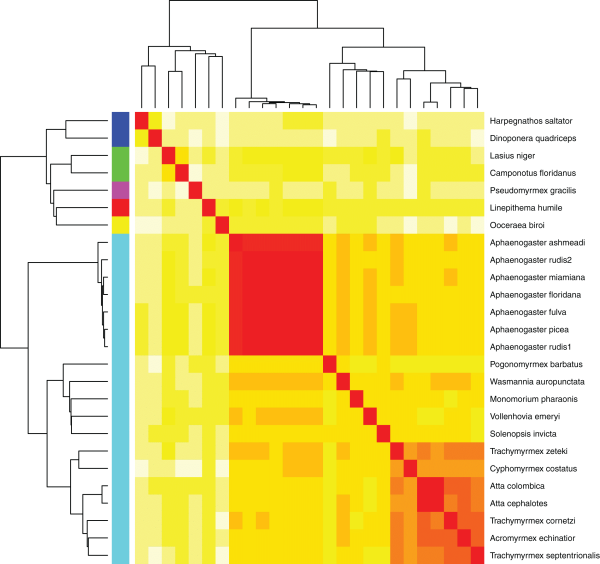Factors such as climate change, habitat destruction and species invasion increase risks of species extinction. Diverse ecosystems are highly adaptable to climate change, for example, the larger a population, the higher the genetic diversity and the stronger the adaptability of the species. Given the important roles of ants in many ecosystems, and forests in particular, they are considered as ideal ecosystem indicators of climate change.
At present, only a few ant species (19 of more than 16,000 species) have been measured whole-genome sequences, and they are mainly from tropical and subtropical forests, rarely from temperate forests.
Matthew K. Lau, an international postdoc of the Landscape Process Group of the Institute of Applied Ecology (CAS), Chinese Academy of Sciences, collected ant species of genus Aphaenogaster in temperate forests along a temperature gradient and sequenced genomes of these species.
A total of six species were collected from seven colonies spanning eastern North America from Florida to southern Canada, covering a large range of latitudes and great variations in climatic variables.
The results show that the genomes of the six species are quite complete, and can represent 96.1% to 97.6% of Hymenoptera BUSCOs. By analyzing genomes sequenced before by others and the new Aphaenogaster sequences, Dr. Lau find that there is a correlation between ant genome size and climatic similarity at the sampling sites. Of all climatic variables examined, minimum temperature, and maximum annual precipitation have the strongest correlations with genome size. At sites where has colder minimum temperature and higher annual precipitation, larger ant genome sizes can be found. These results indicate that extreme climate could be a selective force affecting ant genomes.
The study entitled “Draft Aphaenogaster genomes expand our view of ant genome size variation across climate gradients” has been published in Peer J.
